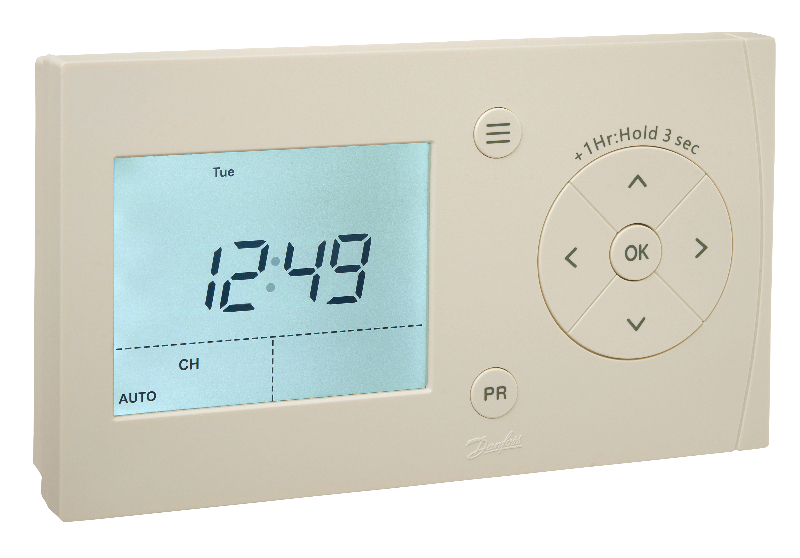
Even the simplest solutions can have a massive impact on energy bills, says Gareth Ash, Marketing Communications Manager at Danfoss, as he takes a look at how modern heating controls can help struggling households keep their homes comfortably and affordably.
Almost half (47%) of adults in Great Britain are using less fuel such as gas or electricity in their homes because of the rising cost of living – according to those asked between 20 September and 1 October 2023 as part of the latest ONS Public opinions and social trends bulletin. Among those who pay energy bills, around 4 in 10 (43%) reported that they were very or somewhat difficult to afford. This is the same as during a similar period last year (29 September to 9 October 2022).
However, research by the European Building Automation Controls Association (eu.bac) suggests that there are around 500 million radiators wasting energy all over Europe due to outdated and inefficient thermostats. If all of these were replaced with electronic TRVs eu.bac estimates that up to 130TWh of energy per year could be saved – that’s a huge saving for consumers and for the planet in terms of carbon emissions.
Proven technology
We know that heating systems use more energy than anything else in the home and that millions of UK households have a gas-fired boiler connected to radiators. Properly specified and installed, modern heating controls, like TRVs, offer a cost-effective energy saving solution for these systems by providing heating only when and where it is needed. These devices are also necessary to ensure that energy savings predicted when insulation is added or a gas boiler is upgraded actually materialise in practice. And, the return on investment is typically very short, in fact, given the current energy prices the payback time can be a matter of months.
TRVs are a readily available technology with a well-established supply chain and their energy saving potential has been proven by independent tests conducted by the University of Salford in 2018. Tests were commissioned by BEAMA Heating Controls (the UK association for manufacturers of controls used in heating and hot water systems) in close co-operation with BRE, who manage the energy performance calculation methodology, SAP. The results showed that a boiler can use 18% less gas when TRVs are used to avoid barely noticeable levels of overheating in rooms not controlled by the central room thermostat.
As a guide for domestic heating installers and their customers, if a thermostat is 30 years or older then it’s time to upgrade both the radiator valve and thermostat. If the valve is between 15 and 30 years old or newer then only the thermostat may need changing. Needless to say, changing a manual radiator valve to a newer TRV offers the highest savings.
Room thermostats
In addition to upgrading radiator thermostats, tests conducted in 2020 by the University of Salford on behalf of BEAMA and OpenTherm showed that replacing a standard room thermostat with one that controls the boiler using load or weather compensation can deliver savings of 10% whenever the heating is on. For households that are into IoT home automation, a smart thermostat could be worth considering.
Field trials indicate that 6% less gas is used in houses with these devices and they offer the convenience of being able to adjust heating times and temperatures using a mobile phone. They can also sense whether you are in or out and adjust the heating settings automatically for further energy savings.
‘Control your Home’
The ‘Control Your Home’ website produced by BEAMA sets out practical advice for saving energy, including what can be achieved by upgrading domestic heating controls. The website includes evidence from tests on a heating system to show the scale of savings that are possible by making a few simple adjustments to the controls. These include using TRVs to keep rooms other than the living room to 18°C rather than 20°C, which can reduce gas consumption by 16%.
BEAMA’s tests also indicate that making small adjustments to time and temperature settings on a programmable room thermostat could deliver a typical saving in energy bills of up to £192 this winter. In addition, tests were carried out to tackle the age-old question of whether it is better to turn the heating off when it’s not needed rather than leaving it running at a lower temperature. Using programmable room thermostats to make a comparison the tests concluded that it is cheaper to switch heating on and off, but not by much.
It seems evident, therefore, that installing modern electronic heating controls where there are none, or upgrading outdated devices, is one of the simplest, most cost-effective ways to reduce domestic heating bills. So, as fuel bills continue to be difficult to afford, we believe there’s never been a better time to save energy by utilising the technology that already exists and that we know works.












